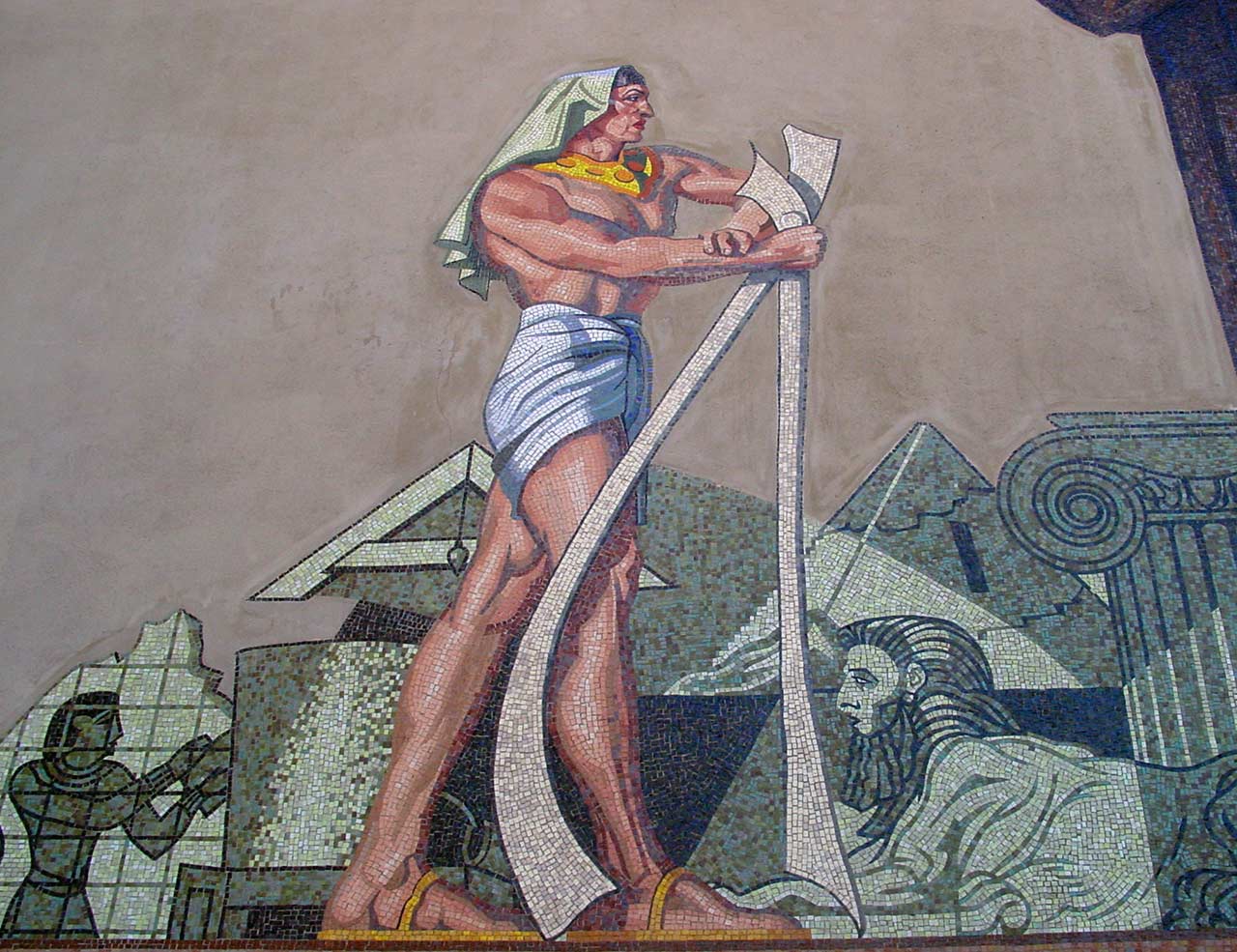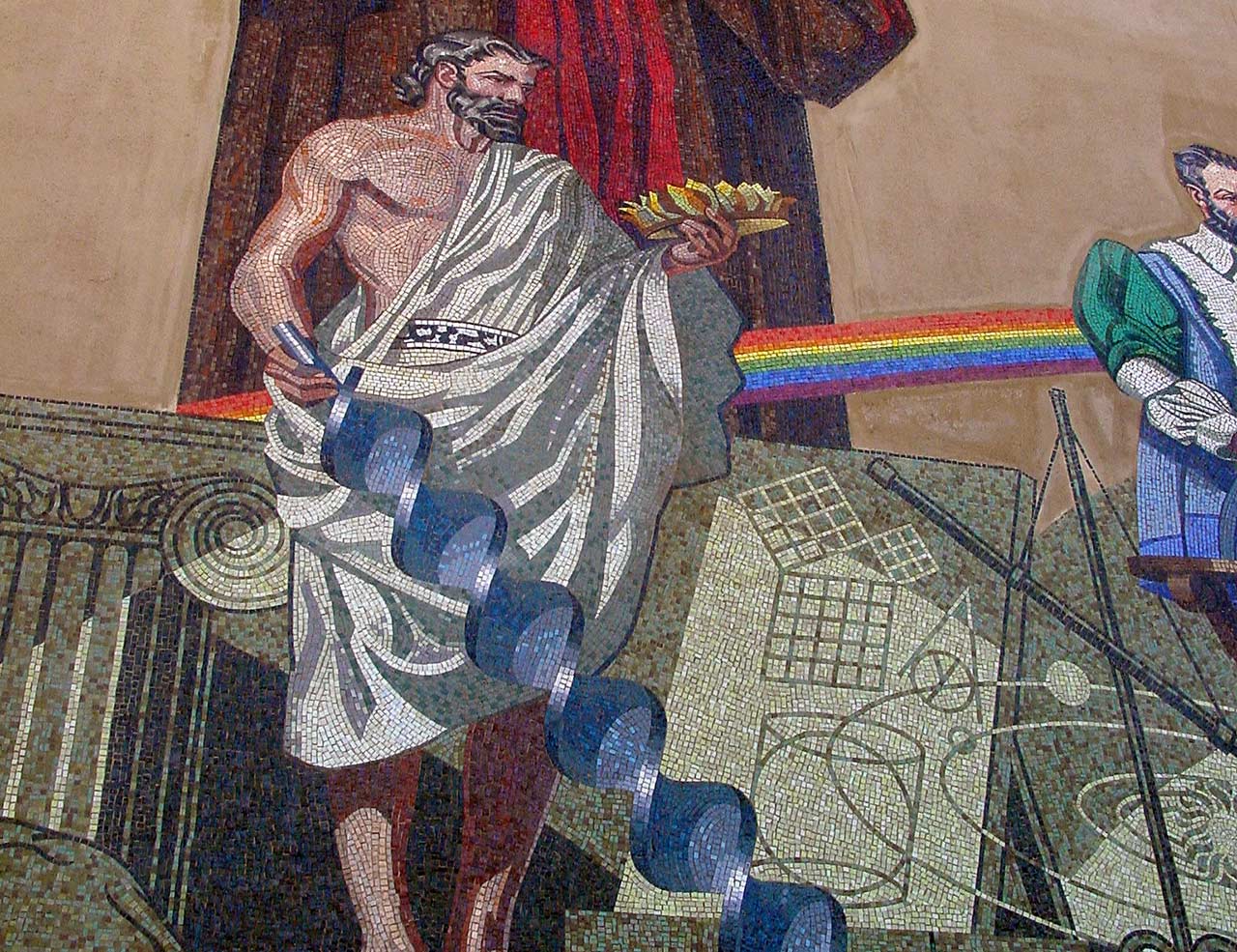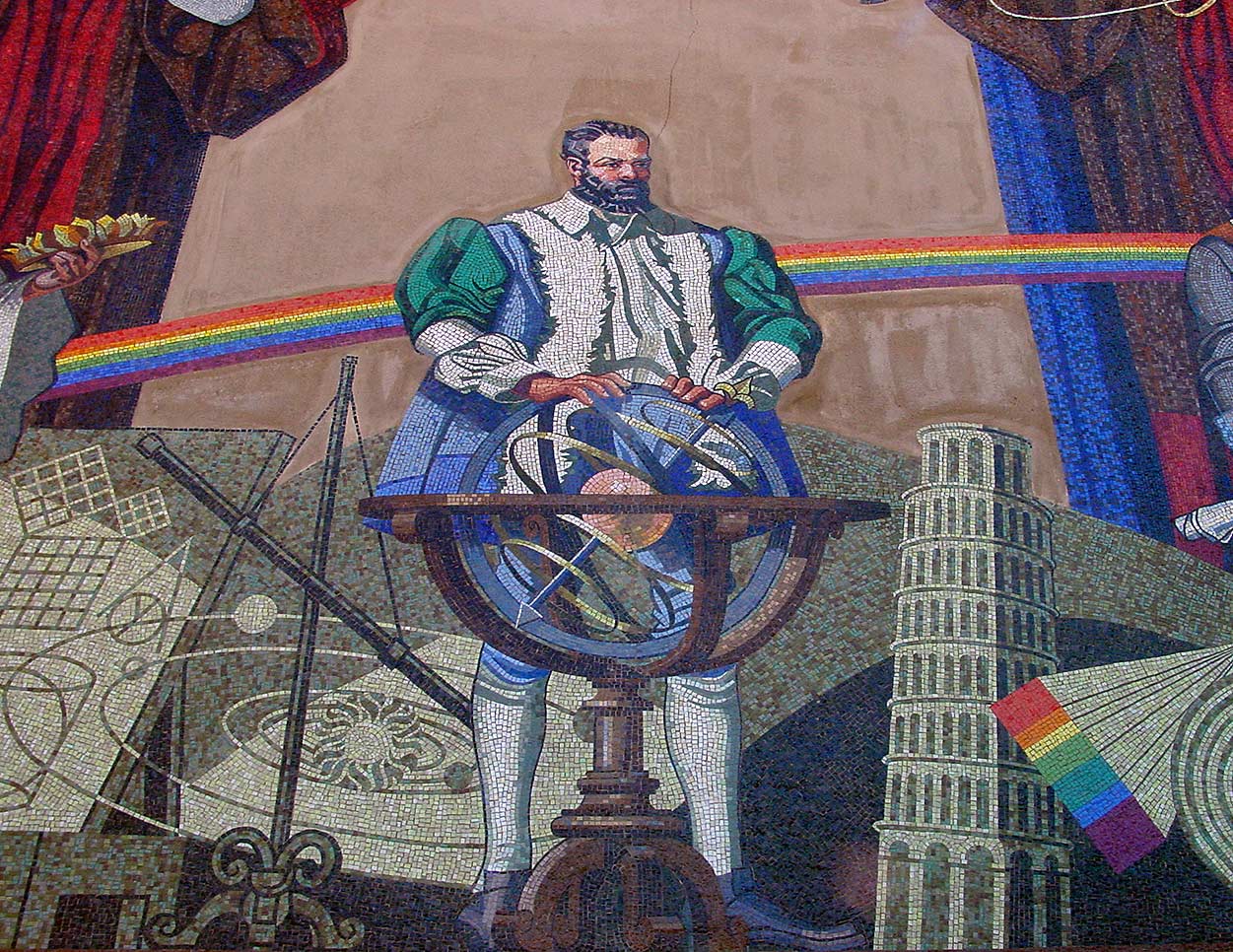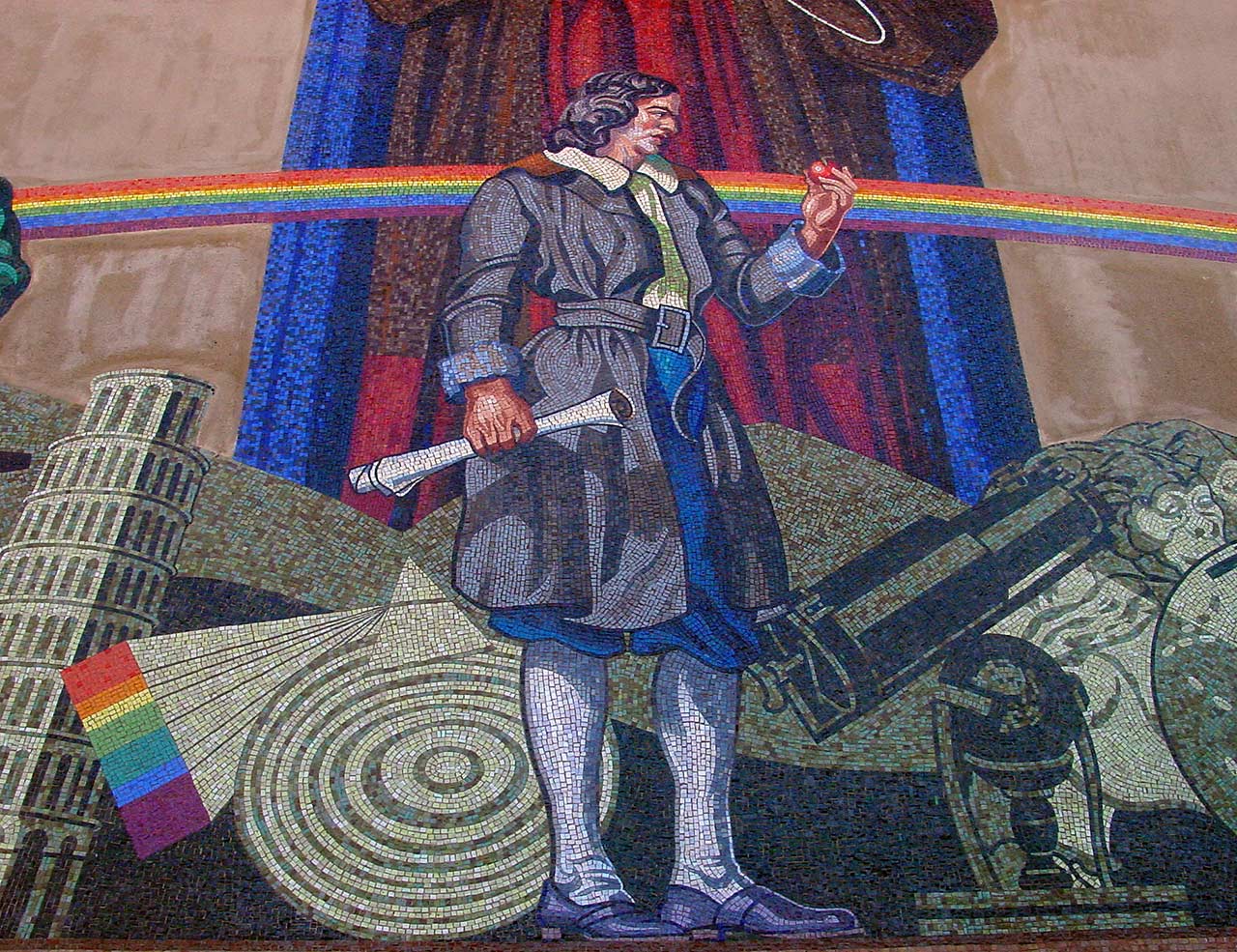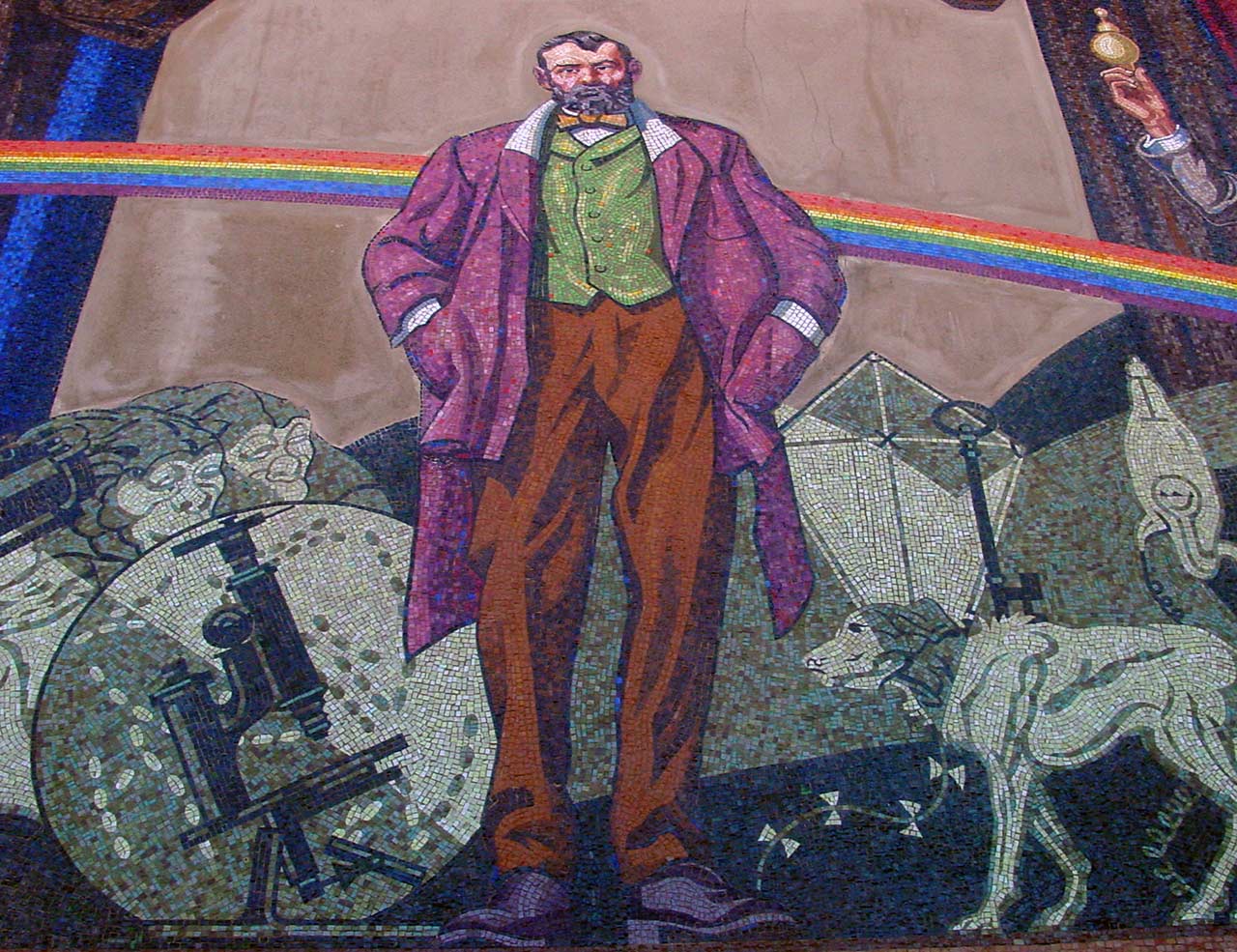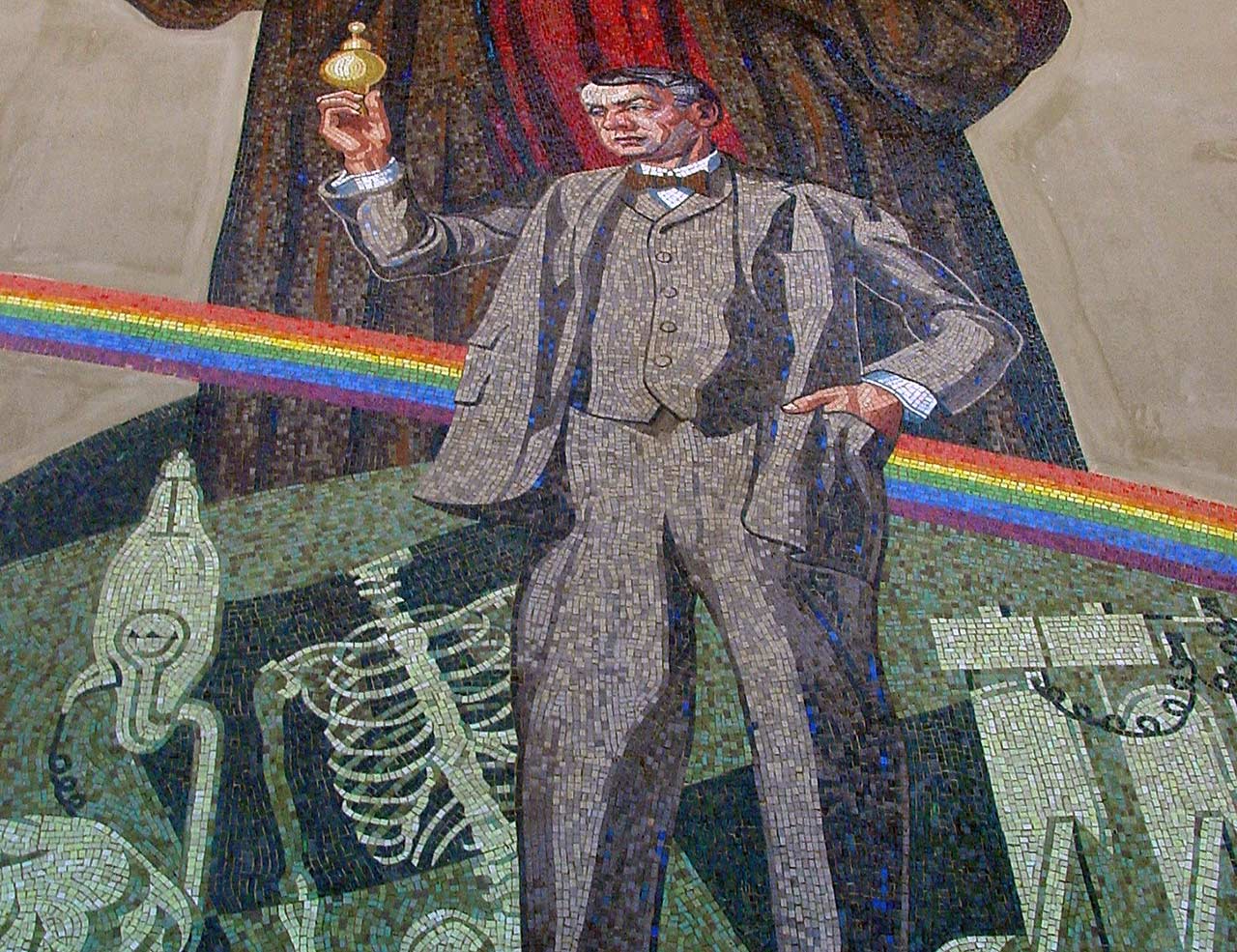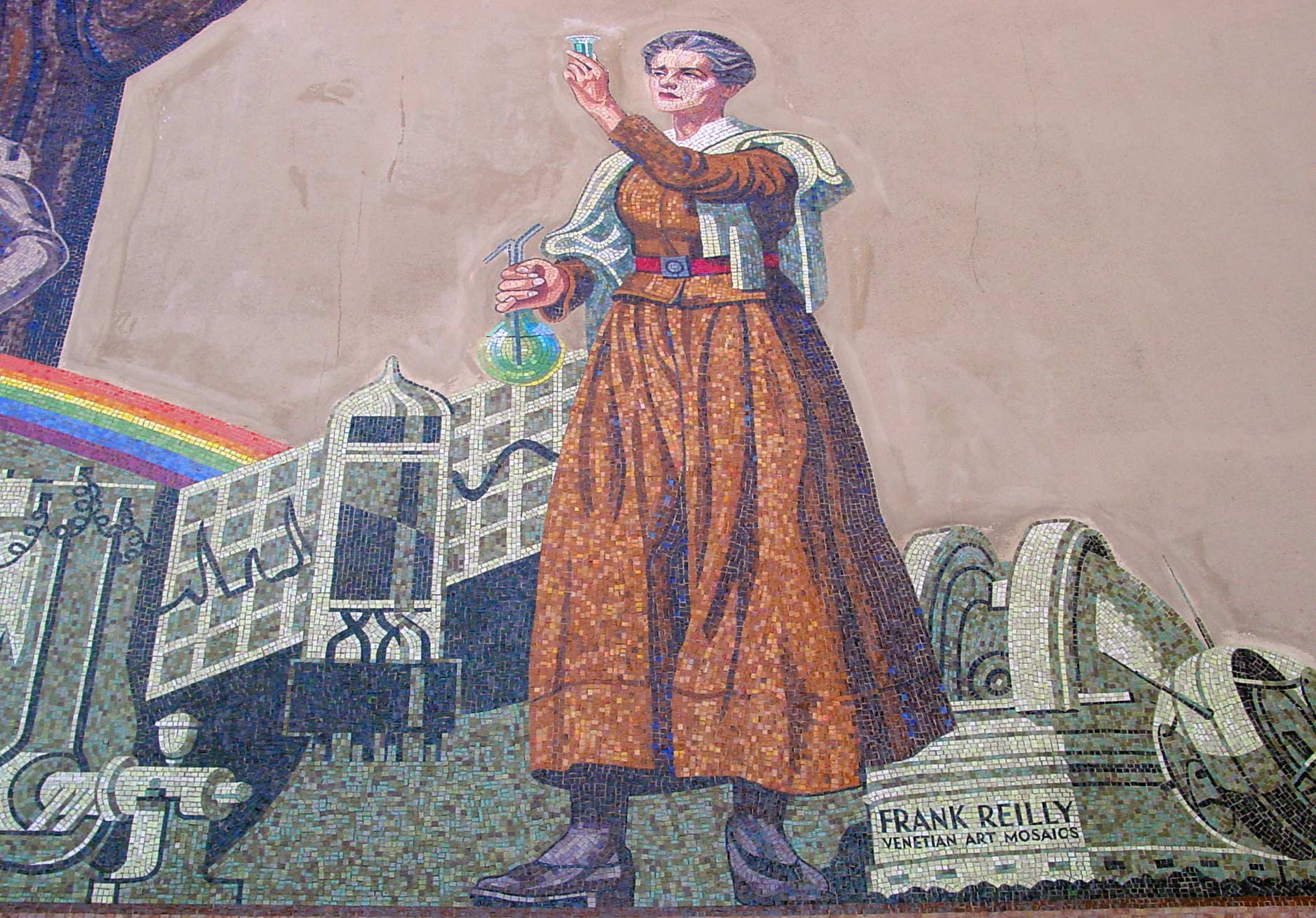Bronx High School of Science
75 West 205th Street
Bronx
Natural History special issue
Part of City of Stars photo essay.

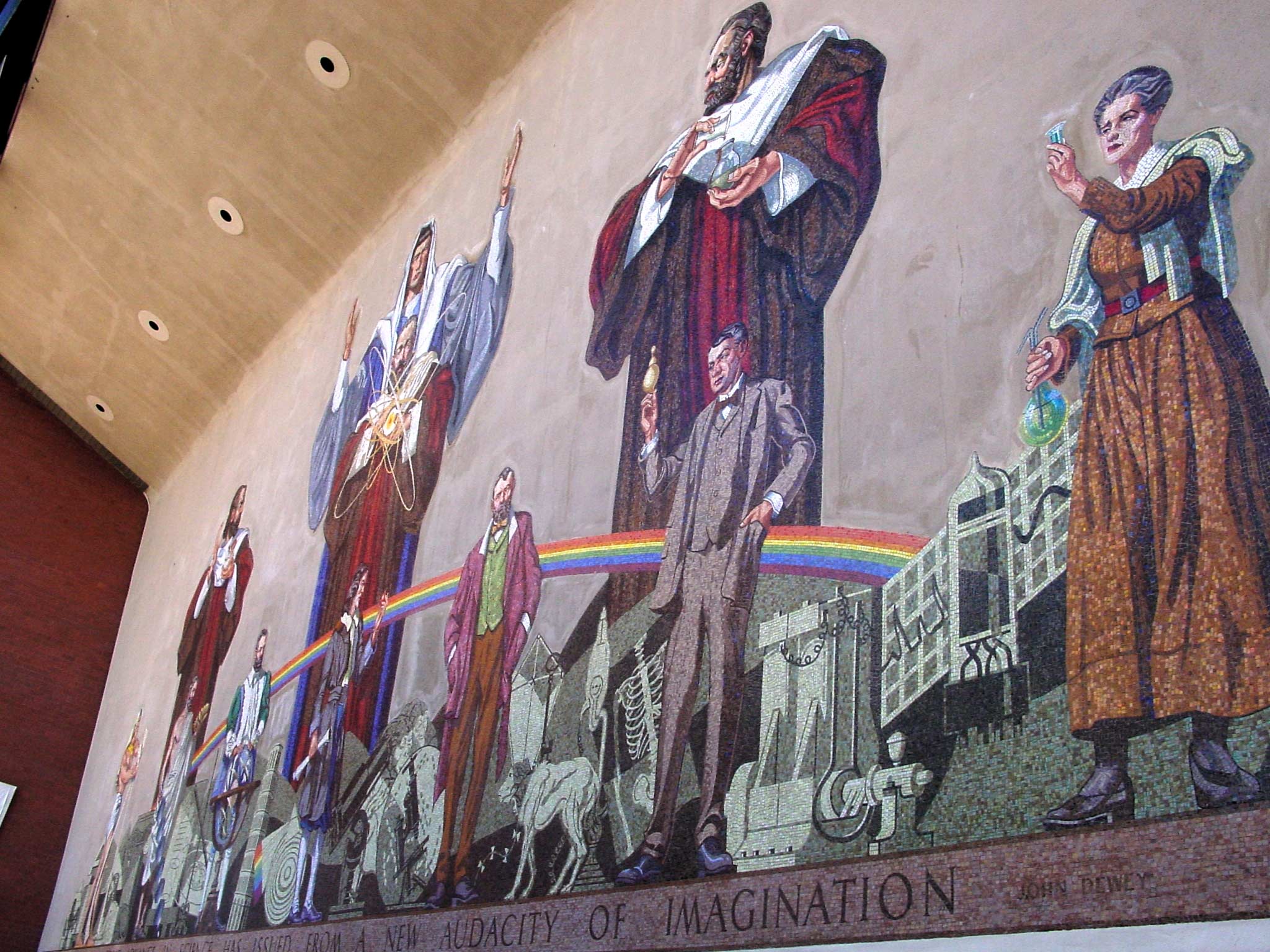
Few secondary schools enjoy the academic reputation of the Bronx High School of Science. Apart from legions of medical doctors, Ph.D. academicians, inventors, artists, and statesmen among its alumni, the school boasts six Pulitzer Prize winners and eight Nobel Laureates—seven in the category of physics, one in chemistry.
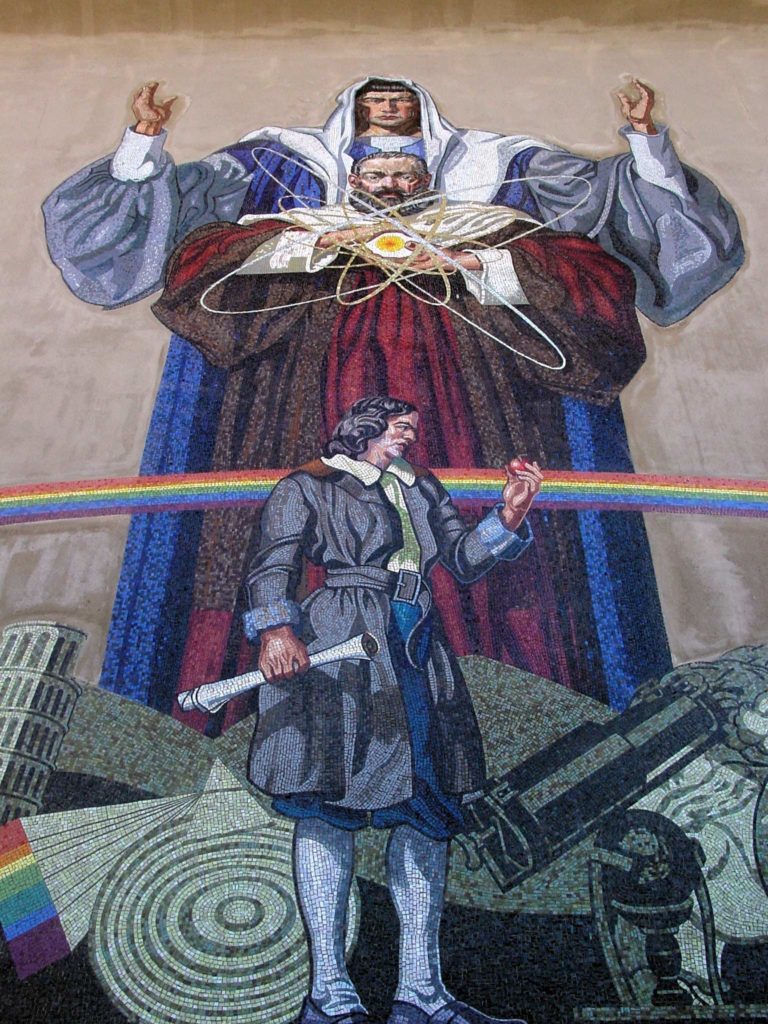
It is rumored that when the school (founded in 1938) acquired a new, state-of-the-art building back in 1959, the student body was consulted about using available funds either on an indoor pool for the swimming team or on inspirational art. They chose the art.
At the beginning and end of every school day, 3,000 students walk under the mosaic likenesses of scientists whose discoveries in biology, chemistry, and physics forever altered our intellectual relationship to nature. The artist, Frank Reilly, juxtaposed images of the scientists with icons of their laboratory and cosmic discoveries to complete this monument to human ingenuity. Beneath the mosaic are the words of the American philosopher and educator John Dewey: “Every great advance in science has issued from a new audacity of imagination.” The placement and posture of each figure in the work lend them an almost biblical majesty—the apostles of science, canonized by the Bronx High School of Science.
And what became of the swim team? They practice and compete at the pool of Dewitt Clinton High School, a block away.
